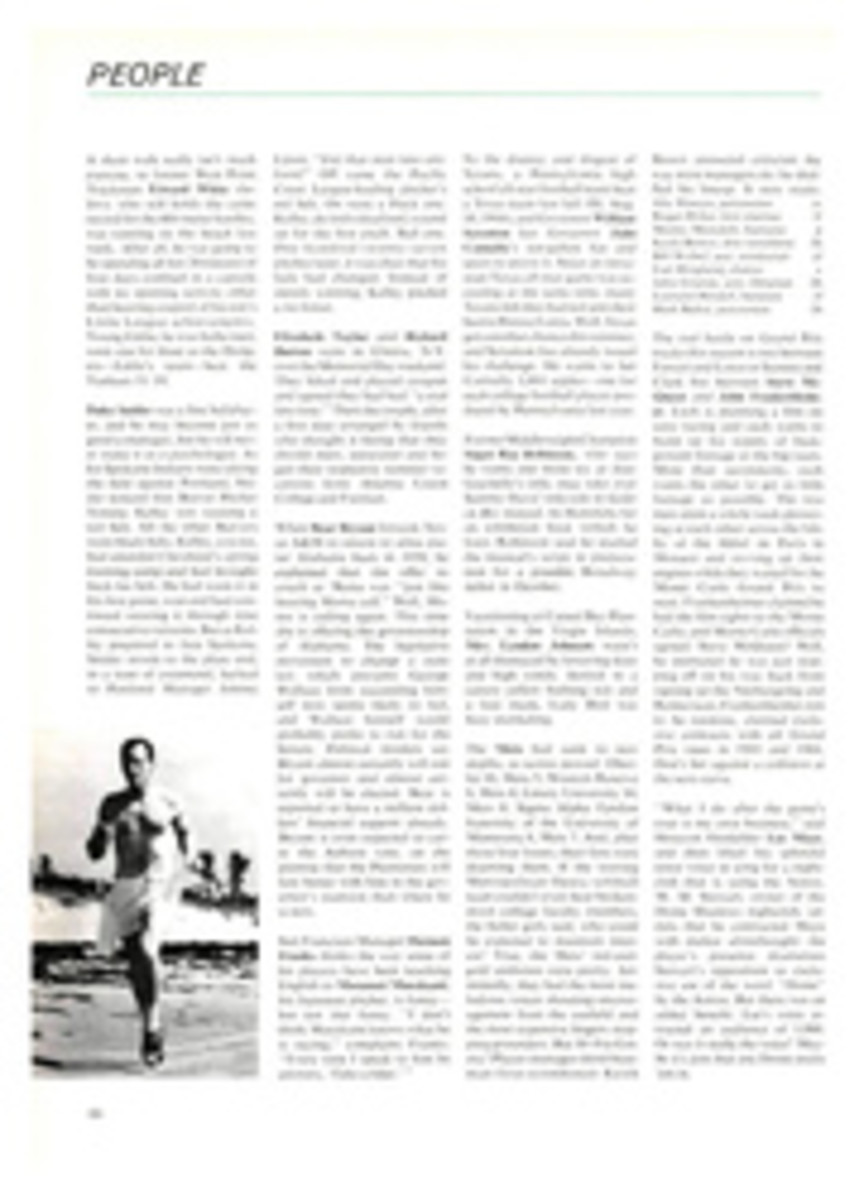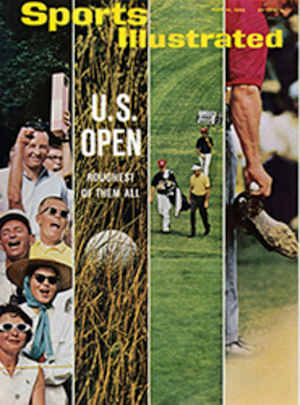
A Rookie Rocks the Brickyard
As the field lined up for the start of the 1926 Indianapolis 500, few in the Memorial Day crowd noticed a tense, 23-year-old rookie driver named Frank Lockhart far back in the seventh row. A week earlier Lockhart had taken his first ride around the track when he talked his way into a tryout in a Miller Special. His time was so impressive he was named an alternate, and when the regular driver became ill Lockhart took his place in the Miller.
Not much was expected of him—he had qualified 20th in a field of 28—and, to make matters worse, rain seemed imminent. Lockhart was told to take it easy, for a slippery track would be especially dangerous for a novice driver.
At the flag, however, he pushed the gas pedal to the floor and began one of the most sensational runs in the history of the 500. After 25 miles he moved into third place, by the 50-mile mark he was in second, and when Dave Lewis, the leader, went to the pits on lap 59 Lockhart roared into first.
It was drizzling by then, and after a car had spun into the wall most of the veteran drivers eased off. But Lockhart kept pushing. When the race was finally flagged at 400 miles because of the severe weather conditions, Lockhart was almost three laps ahead of his nearest rival. He was the first rookie ever to win the Indianapolis 500.
Lockhart was no rookie, though, when it came to dirt-track racing. He had been competing since his late teens, when he had built his own Ford hot rod from a rusted Model T chassis and blitzed his way around California's Ascot Speedway. Born in Dayton in 1903, Lockhart moved to California with his mother when he was 6. His father had died that year and Mrs. Lockhart took in sewing to support her children. At 8 Lockhart nailed together his own soapbox racer, and his racing career began.
A fretful, inattentive student who filled his school notebooks with drawings of engines and cars, Lockhart disliked the basics of education. Yet his genius for mechanical design was awesome, and he was known to memorize entire issues of Popular Mechanics. When he took the entrance exam at the California Institute of Technology, he startled the examiners. Nobel Physicist Robert Millikan phoned Frank's mother, informing Mrs. Lockhart that her son's scores were "among the highest in our experience." He told her: "Frank has the mind of a born scientist. Can't you find someone to back his education?"
Mrs. Lockhart could not, and the boy went to work as an auto mechanic. On weekends he raced at Ascot, gaining a reputation for near-suicidal nerve on the dirt. At 21 he married the only girl he had ever dated. Like her husband, she didn't smoke or drink.
After his startling win at Indianapolis, Lockhart accepted a generous offer from Designer Harry Miller. He was to be given a car to race for the 1927 season, and was to be accompanied by Ernie Olson, the crack mechanic who had helped him gain a seat at Indy.
It turned out to be a perfect combination. In one afternoon at Cleveland in 1927, Lockhart broke more than 100 records with his Miller Special. He almost won the 500 again, too. After earning the pole position with a 120-mph qualifying speed and leading for 300 miles, he was forced to quit, when a connecting rod broke. He became the second-fastest man on earth when he achieved a new class straightaway mark of 171.02 mph on a dry lake bed in the Mojave Desert. Newspapers referred to him as FRANK THE GIANT KILLER after this performance. Yet Lockhart was not satisfied.
He next approached Fred Moskovics, president of the Stutz Motor Company, and the businessman agreed to help finance a car that was to be called the Stutz Black Hawk. Lockhart then hired Zenas and John Weisel, two noted designers, and immediately began drafting plans for the car. It was to be small and streamlined, down to four teardrop wheel spats. It would house a pair of Miller straight-eight engines (giving more than 560 hp) compactly fitted into a single crankcase and would reach 100 mph in low, 200 in second and up to 300 in high. The land-speed mark then stood at 203.79 mph, set by Henry Segrave's immense 1,000-hp Sunbeam, which weighed 7,500 pounds compared to the Hawk's planned weight of 2,800.
"We'll shoot for 225," Lockhart told Zenas. "That should give us the record."
During the eight months it took to build the Hawk, Malcolm Campbell, with his huge Napier, raised the mark to 206.9 at Daytona Beach—yet when Lockhart's "tiny" car was finished the experts agreed it could exceed 300. Tires, however, would be a problem. Lockhart had always used Firestones on the track, but he was offered $20,000 if he would try some experimental two-ply cable-cord tires on the Hawk. Since the car had cost an estimated $100,000—a much higher total than anticipated—Lockhart accepted the offer.
Under cloudy skies, late in February of 1928, at Daytona, Lockhart finally went all out in the Black Hawk. Because of rain squalls earlier in the day the sand was in poor shape, and the roaring Stutz hit a rough spot in the beach at better than 220 mph. Lockhart lost control, and the car flipped end over end into the sea.
"The driver, temporarily dazed, was still in the seat," said W. F. Sturm, Henry Segrave's manager. "Waves tore at the car as it settled in water deep enough to cover it. Twenty men waded out into the surf, and one of them clamped his hand over Lockhart's mouth to keep him from drowning. So terrific had been the force of the impact that the Black Hawk's body was bent, and Lockhart was pinned in the car. Someone ran into the water with a rope, and it was quickly tied to the submerged front axle. More than a dozen men tugged the car slowly back to the beach, and the driver's life was saved."
Lockhart's only injury was three cut tendons on his left wrist. The car was in worse shape and took two months to repair. During that time Ray Keech raised the land speed record to 207.5 mph.
Late in April of 1928, Lockhart set out once again over the packed sands of Daytona, making three faultless runs as a warmup (he reached 200 mph). He then aimed the Black Hawk's sleek nose for the AAA timing traps, superchargers howling under high revs. His speed rose: 200...210...215...220. Suddenly, sand spurted up from the right rear tire, and the spectators screamed. The tire had blown out. Lockhart was helpless in the tight cockpit. The car skidded 500 yards, then thrashed and slammed itself over the beach, pitching out Lockhart before coming to rest upside down, a demolished mass of smoking metal. Lockhart lay face down in the sand, dead at 25.
PHOTO

